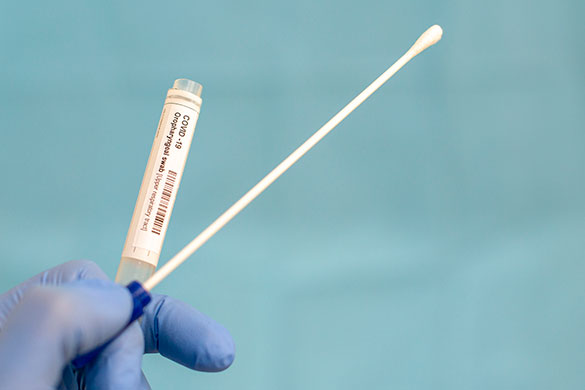
Flocking fulfills an unmet need in diagnostics and sample detection
The COVID-19 pandemic has led to a renewed focus on the need for innovative research. As testing became a crucial metric for slowing the spread of the virus, it became immediately apparent the swab and diagnostic industries were ill-prepared for such a rapid increase in consumer demand. Two companies, Puritan Medical, and Copan Diagnostics scaled up the production of flocked swabs, which have increased diagnostic sensitivity due to their high surface area, anisotropic structure, and ability to release biological specimens. The COVID-19 pandemic made one thing apparent – flock is a tremendous swabbing material. Surprisingly, however, is the lack of broader application of flock towards the diagnostic/swabbing market space, which has an estimated 5.9% CAGR over the next 4 years and revenue surpassing $256 in 2019 alone.
Though Puritan Medical and other customers had a solid handle on flocked swabs for human diagnostic testing, there are unmet needs in forensic tests, food pathogen testing, surface protein detection, and harmful chemical detection. Based on existing data, modified flock-based swabs or wipes would fill a growing demand in the diagnostic/swabbing industries.[1–3] For example, McCarthy and colleagues demonstrated that flocked swabs had significantly higher extraction rates and detection rates on human cells (2x the efficiency) and bacteria (7x the efficiency) compared to cotton swabs.[4] Noting the highly absorptive nature of flock, it is conceivable to suggest gloves or wipes with flocked surfaces could have immediate and rapid utilization in the security market (i.e. TSA agents performing chemical wipedowns) and forensics (on-site sampling). Sensitivity of rapid wipedowns at security checkpoints for certain chemicals would increase by switching from microfiber/cotton wipes to flocked wipes.
Additionally, in the forensic field, blood, chemicals, DNA, or other samples are wiped from a surface with whatever is on-hand (i.e. paper, tissues, cotton swabs).[5] Having simple wipes with a single flocked surface of a short, low-dTex fiber would be an efficient way to remove samples from a surface and subsequently release the samples for further testing.
Another advantage flocked diagnostic devices have over other techniques is the ability to use different polymer types in fibers or adhesives. For advanced biological surface testing, it may be advantageous to create fibers using polyvinyl acid (PVA), to which the fibers would dissolve completely once suspended, ensuring a 100% release of the sampled substance. In another instance, it may be advantageous to use harder (rayon) or softer (polycaprolactone) polymers for tissue-specific swabbing.[6] Since flocking utilizes a near-ubiquitous fabrication technique, it is highly adaptable for specific applications.
As personalized medicine and diagnostics advances, increased application of flocking towards biological and forensic diagnostics is inevitable. As the leading supplier of flocked specialty objects for more than 45 years, Spectro Coating offers the most advanced flock fiber production on the market and is equipped to mill, flock, and produce a variety of fibers ranging from PLA to Nylon for in vitro, in vivo, and ex vivo applications.[1,7] Spectro Coating is ready to work with you to design an off-the-shelf solution for your specific diagnostic/detection applications.
[1] R. J. Brownlow, K. E. Dagnall, C. E. Ames, Journal of Forensic Sciences 2012, 57, 713.
[3] H. S. Tunsjø, A. S. Berg, C. S. Inchley, I. K. Røberg, T. M. Leegaard, APMIS 2015, 123, 473.



